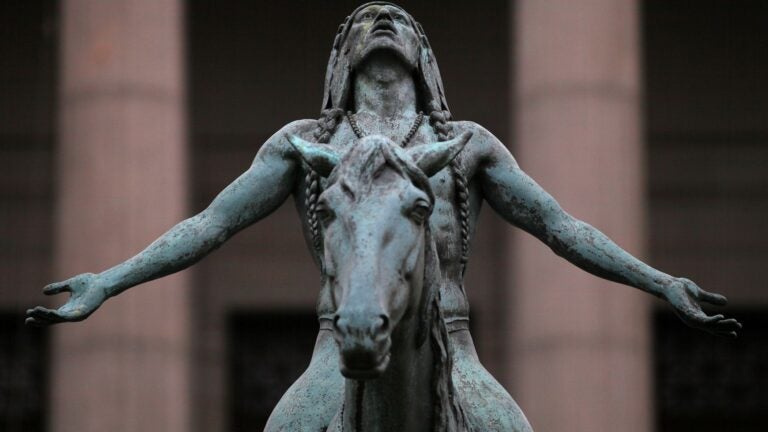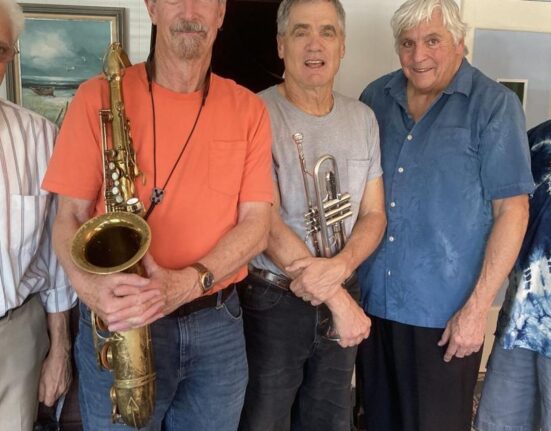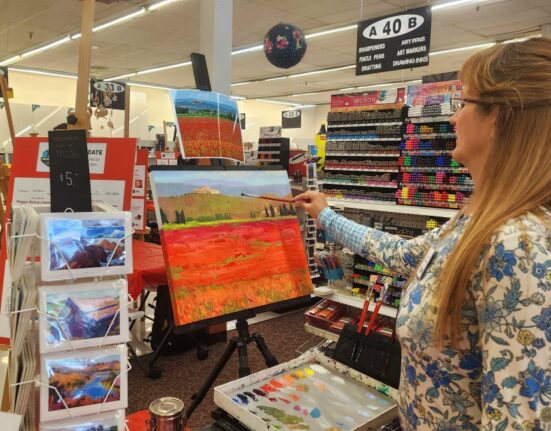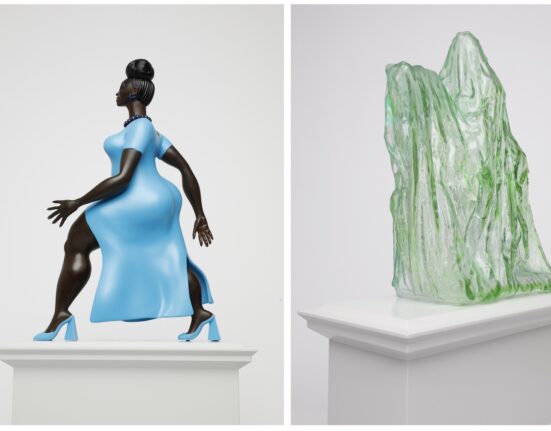
For more than a century, visitors to Boston’s Museum of Fine Arts (MFA) have been greeted by a statue of a Native man on a horse, looking up to the sky with his arms outstretched and palms up.
The statue — titled “Appeal to the Great Spirit” — encapsulates freedom and power for some. For others, it’s a false portrayal of a Native American man who, as one visitor to the museum wrote, is “welcoming visitors onto land that was stolen.”
The museum announced last week a major effort to fight against the image created by the exhibit. As part of an ongoing series, the museum will invite artists to create work that will stand near “Appeal” and seek to recontextualize and “respond” to the statue.
Artist Alan Michelson, a Mohawk member of Six Nations of the Grand River, will be the first to create a temporary exhibit in response to “Appeal.” Michelson’s project, titled “The Knowledge Keepers,” will be unveiled in November, the museum said.
The exhibit is part of a larger MFA initiative called The Huntington Avenue Entrance Commission, which will invite artists each year to create “site-specific” artworks for the Huntington Avenue entrance.
“I’m honored to be the artist chosen to inaugurate the Huntington Avenue Entrance Commission. In 1909, when Cyrus Dallin cast ‘Appeal to the Great Spirit’ in Paris, the image of the noble but defeated Plains warrior as an exemplar of the ‘vanishing race’ was popular worldwide,” Michelson said in a statement. “In 2024, I hope my site-specific installation will challenge ingrained stereotypes and racial myths by presenting a story of survival and agency, not defeat or appeal, and I thank the museum for supporting this work.”
“Appeal” criticized for perpetuating myth of “vanishing race”
Sculptor Cyrus Dallin created “Appeal to the Great Spirit” in 1909. It was installed at the MFA’s main Huntington Avenue entrance in 1912. Dallin is known for various sculptures throughout Massachusetts, including the Paul Revere statue in Boston’s North End.
The MFA says “Appeal” was praised by critics at the time it was made, adding that Dallin himself thought his work “honored Indigenous peoples.”
“Like the art critics of his time, Dallin had a limited perspective on his work. He likely saw ‘Appeal to the Great Spirit’ as different from negative images of Native people, even though it perpetuated the ‘vanishing race’ stereotype with its anonymous, unarmed figure dressed in a mix of Lakota- and Diné-style regalia,” MFA’s website reads.
Over the years, the museum has said publicly that the statue furthers stereotypical and harmful representations of Native people.
“Today, the MFA’s interpretation recognizes that the ‘Appeal’ is based on an inaccurate accumulation of Native symbols and ultimately capitalized on the degrading myth of the ‘vanishing race,’ which portrayed Indigenous peoples as disappearing in the face of modern civilization,” MFA wrote in the announcement about Michelson’s upcoming exhibit.
Michelson grew up in Boston, questioned sculpture early on
Michelson himself is very familiar with “Appeal.” He was raised in Boston and attended the School of the Museum of Fine Arts at Tufts University and passed by the statue on his commute to school. He often questioned the sculpture even then, he said in a statement to the MFA.
“What is a statue of an anonymous Plains rider doing in front of the Museum of Fine Arts, Boston? Why is he wearing a war bonnet yet unarmed, and also a Navajo necklace? Why is he supplicating?” Michelson said.
Though the MFA did not release specific details about Michelson’s upcoming exhibit, the artist has worked with various mediums including painting, sculpture, photography, sound, glass, and stone. His art, which has drawn from both Indigenous and Western cultures, was previously displayed at the MFA in 2022.
“The Knowledge Keepers” will be placed on the two empty pedestals outside the Huntington Avenue entrance, according to the museum.
“We’re honored to launch this initiative with the work of Alan Michelson, an artist who has a long-lasting relationship with the Museum dating back to his student days. He will undoubtedly create a fascinating project that responds directly to the multilayered histories of the space and the communities that we serve,” said Matthew Teitelbaum, Ann and Graham Gund Director at MFA.
MFA has tried to address controversy around the statue for years
The MFA has engaged in efforts to address controversies around “Appeal” for years. In 2019, the museum invited community members to give their input on the statue, acknowledging it has “entered today’s international debates about cultural appropriation, public monuments, and Indigenous erasure.”
“I hate [the statue] and usually use the back entrance to avoid it,” one MFA visitor wrote. “It tells me that the museum isn’t for Native people like me, but for white people and their false impressions of reality.”
Others acknowledged that the statue contributes to harmful stereotypes but said it represents freedom, resilience, and strength.
“More accurate depictions should be the norm, however, it also must be noted that Dallin’s piece still is one of the few attempts at honoring the history of the indigenous peoples and has some worth,” one visitor wrote.
In 2021, the museum commissioned artist Elizabeth James Perry to plant native corn around the statue to “serv[e] as a counterproposal to the misrepresentations and erasures the sculpture embodies,” MFA said at the time, describing the statue as “made by a white artist for white audiences.”
When the statue was installed over a century ago, it was never meant to be permanent. But it’s now a central part of the MFA and one of the most reproduced objects in its collection, the museum says.
“The Huntington Avenue Entrance Commission is incredibly meaningful for the MFA, as it will enable us to create a warmer welcome for Bostonians and visitors from all over the world as they enter the Museum,” Teitelbaum said.
Loading…






